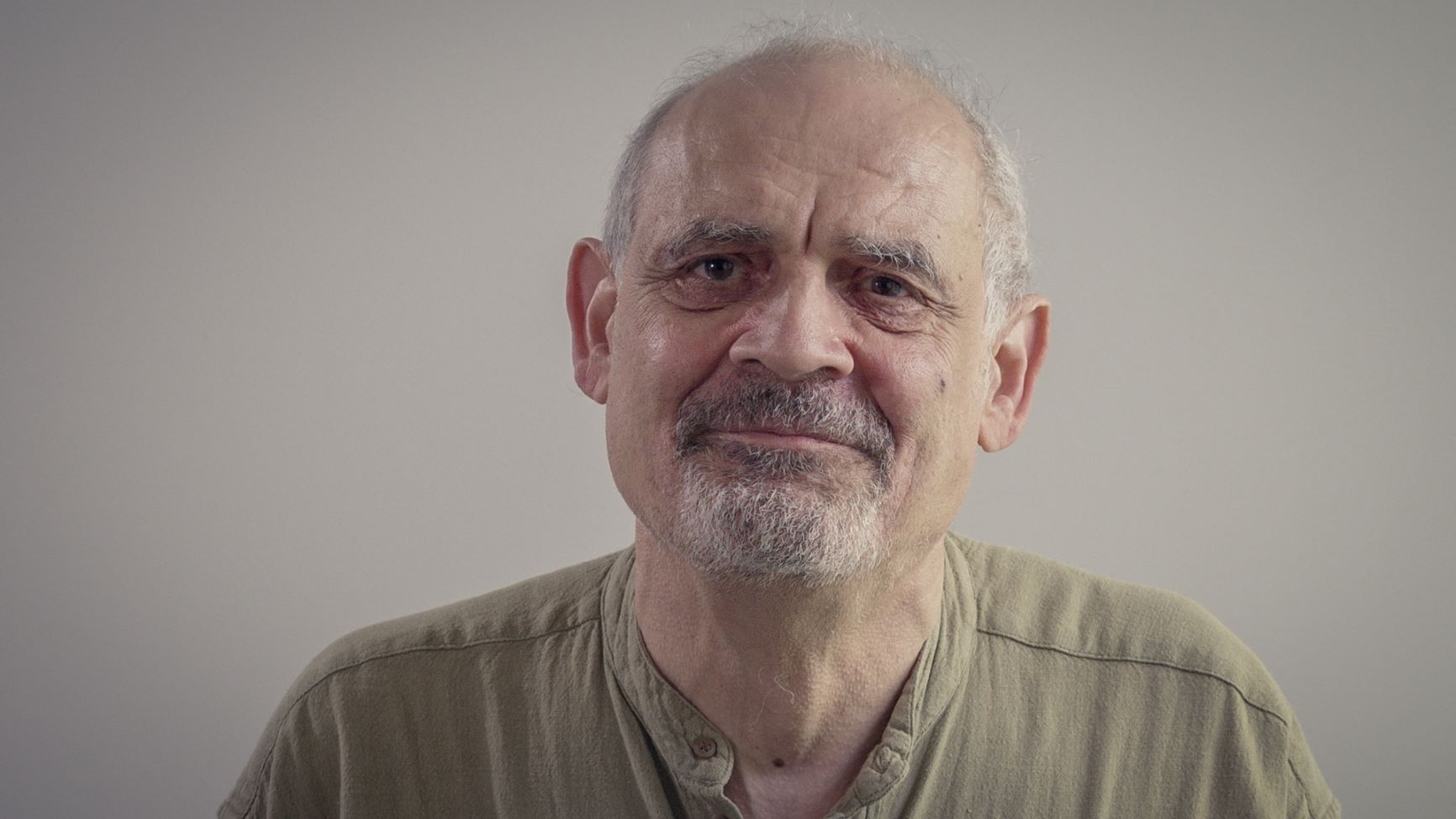The pioneering researcher Pierre-Louis Curien wins the Inria - French Academy of Sciences Grand Prize
Date:
Changed on 26/11/2020

On the eve of receiving his award, Pierre-Louis Curien, Emeritus Director of Research at the CNRS, looks back at a long and successful career devoted to theoretical computer science that has seen him meet and work with some of the biggest names in the field.
Our story begins in the mid-1970s, just after Pierre-Louis Curien had graduated from the École Normale Supérieure in Ulm with an agrégation in mathematics. However, he was unsure about continuing along this path. “I was intimidated by all those maths wizards at the ENS”, he admits, although he would go on to build bridges between algebra and computing throughout his career, revolutionising a number of concepts. “It wasn’t until I met Maurice Gross, a linguist and computer scientist who pioneered electronic dictionaries, and Gérard Berry, another computer scientist who held the ‘Algorithms, Machines and Languages’ Chair at the Collège de France between 2012 and 2019, that I turned towards theoretical computer science, studying for a PhD in λ-calculus [lambda calculus].”
Why did you choose a career in research?
“My grandfather, Georges Dumézil, a linguist and historian who specialised in mythology and religion, and my father, Hubert Curien, a physicist and Chairman of Inria’s Scientific Council, President of the CNES and the European Space Agency (ESA) and Minister for Research, were both researchers and coming from such a family obviously had a big impact on my career choice! That said, I wasn’t always set on computer science: as a student at the ENS, I wavered between my two passions, mathematics and languages. With its programming languages, computer science seemed like the best way of combining these two passions.” - Pierre-Louis Curien
Invented in the 1930s by the logician Alonzo Church, not long before the famous Turing machine, λ-calculus is a streamlined language corresponding to such programming fundamentals as declarations and procedure calls. It now forms the framework of “functional” programming languages, referred to as such in order to highlight that programs are functions which receive inputs and return an output. One such language is OCaml, a jewel in the crown of French research. Developed mainly at Inria, OCaml is employed in both teaching and research, where it is used for a range of software developments, but also in industry, in fields ranging from embedded systems to financial computing.
“My early research addressed theoretical questions, such as ‘how can you demonstrate that a program is properly executing a given task?’ and ‘will two different programs coded to perform the same task do so with the same level of precision, and how can this be evaluated?’” These problems were mainly of interest to programming language designers seeking to ensure that these languages were efficient and reliable.
“I showed that you can provide rigorous answers to these questions by mathematically formalising the way in which a computer program works, drawing on concepts from algebra.” Pierre-Louis Curien has constantly demonstrated an apparently boundless creativity in his quest to forge links between mathematics and computer science. In the ‘80s and ‘90s, his research had an impact on the design and implementation of programming languages, leading most notably to the creation of virtual machines, such as the CAM (categorical abstract machine). This machine was a central component of the first compiler for the CAML programming language, which would later become OCaml. “The change in perspective was quite striking: it turned out that the highly abstract structures used for interpreting λ-calculus were a ‘low-level’ language, meaning that it was close to a machine language, and interpretation became compilation”, comments the researcher.
A special year
“In 1983, during a work session at Sophia-Antipolis, while I was presenting my ideas for a new execution model for λ-calculus (which would go on to become CAM), I looked across at Gérard Huet and Guy Cousineau, my elders, and saw their faces light up. They immediately saw the link with other research I was unaware of at the time, and sensed the potential benefits. Such moments are rare in a researcher’s life!” - Pierre-Louis Curien
In the 2000s, Pierre-Louis Curien turned the focus of his research towards the logical foundations of “proof assistants”, which are used for the certification of programs and the formalisation of mathematical proofs. Program certification is hugely important for software security, as in the case of embedded computing. For example, it was found that the Ariane 5 explosion in 1996 occurred due to the running of a code that the rocket no longer required. The formalisation of mathematical proofs meets the mathematics community’s need for tools to verify complex demonstrations.
Pierre-Louis Curien’s contribution to his discipline extends far beyond research and benefits the entire scientific community. He was involved in setting up and running a CNRS laboratory and an Inria research team, bringing together mathematicians and computer scientists, as well as a research and teaching department at the ENS. He has also led or participated in some thirty collaborative research projects, supervised around twenty PhDs, published fifty or so scientific papers and been a member of numerous national scientific administration committees.
The Inria - French Academy of Sciences Grand Prize puts Pierre-Louis Curien in the illustrious company of France’s great computer science researchers, among familiar faces such as Gérard Huet, a member of the French Academy of Sciences, and Xavier Leroy, a professor at the Collège de France. In computer science as in life in general, it is all about whom you meet!
Pierre-Louis Curien in seven key dates